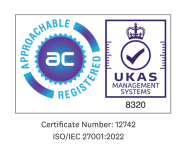Organisational change can have a profound impact on an employee’s psychology, often leading to disengagement and low mental health. To counter these effects, organisations must prioritise rebuilding trust, engagement, and psychological safety at all levels.
Open communication, transparency, and involving employees in decision-making processes are essential to restoring confidence and improving engagement metrics. By implementing targeted actions, such as aligning values, offering flexible arrangements, and providing growth opportunities, organisations can not only retain employees but also foster a stronger, more resilient workforce in the wake of change.
Join People Scientist Bettina Bonello Ghio as she shares practical strategies for navigating organisational change, focusing on rebuilding trust, boosting engagement, and enhancing psychological safety. Learn how open communication and targeted actions can support your team and foster a resilient workforce.
Survivor syndrome
“Organisational change often brings about differences in the psychology of employees, affecting their cognitive, behavioural and emotional states. During times of sudden or anticipated change, employees assess the risk vs reward and analyse potential outcomes to determine whether staying or leaving benefits them. This thought process often influences whether they remain with the organisation or seek new opportunities elsewhere.
Those who remain after changes like redundancies are often referred to as ‘survivors’, and are susceptible to what is known as survivor syndrome. This phenomenon can have negative consequences, as remaining employees may experience heightened levels of anxiety, resistance, or disengagement. The psychological contract between an employer and employee (which is an unspoken agreement outlining mutual expectations and beliefs) can be broken during this time. Breaching this contract, employees may feel less valued, trusted, and supported, having an impact on the overall engagement within the organisation.”
Resetting the organisation post-change

“Following any kind of change, organisations often need to reset their approach to employee engagement. Research and our customer data suggest that both eNPS scores and the Engagement Index typically dip after changes are implemented. To regain productivity and engagement, organisations must start from scratch and rebuild trust and engagement among their people.
A key concept here is psychological safety, which is a term HR professionals often use to gauge employee wellbeing and engagement. Psychological safety refers to the belief that the work environment allows individuals to speak up, share ideas, and take action without fear of negative repercussions. This safety must be present at all levels of the organisation, from the mission and values at the top level to team dynamics and interpersonal relationships at the individual level.”
How do you improve engagement scores?
“When it comes to improving engagement scores, a straightforward answer is open, transparent communication. Regardless of the size of the organisation, clear and consistent communication can resolve many of the issues that arise during times of change. Leaders should communicate, and then re-communicate, the organisation’s direction, future plans, and employee roles in shaping their future. Employees should also be involved in decision-making processes where possible.
Conducting surveys during this period is crucial for gathering feedback, understanding employee sentiment, and taking appropriate action. After action is taken, a ‘You said, we did’ approach to communication can reinforce positive outcomes. Additionally, working with experts to understand what drives engagement in your particular organisation will help in creating more targeted and effective actions to boost engagement and productivity.”
Action points to consider

After organisational change, retaining employees requires intentional strategies to rebuild trust, boost morale, and foster engagement. Here are some steps Bettina recommends to help your organisation create an environment where employees feel supported and motivated to stay:
Organisational-level actions:
At the organisational level, it’s important to create a supportive environment that aligns with your employee’s values and provides a sense of security. Here are a few actions to consider:
- Reaffirm the organisation’s values: Employees are more engaged when they feel their personal values align with the organisation’s.
- Propose flexible working arrangements: Offering flexibility can make a big difference, particularly for those who need them to manage personal challenges post-change.
- Maintain fairness and transparency: Actively involve employees in decision-making, listen, and ensure everyone feels heard.
- Highlight available support and wellbeing policies: Ensure employees are aware of any wellbeing initiatives that may not be widely known to all employees.
- Ensure that leadership remains accessible: Digital tools like Hive’s Open Door feature allow employees to ask questions anonymously, reducing fear of being singled out.
Individual-level actions:
On a more personal level, creating opportunities for individual growth and connection is vital. Here’s how to support employees directly:
- Encourage employees to find fulfilment, whether through their roles or through external activities like volunteering, which can also align personal values with the organisation’s.
- Offer more frequent 1-1 discussions with management to ensure employees feel comfortable addressing concerns.
- Upskill employees to help them take on new challenges and grow within the organisation.
The takeaway
“Retaining employees after organisational change doesn’t have to be an uphill battle. By focusing on rebuilding trust and creating a sense of psychological safety, you can help your team feel supported and valued. Open, transparent communication, along with involving employees in decision-making, goes a long way in restoring confidence and keeping engagement levels up.
Taking both organisational and individual action – like reaffirming company values, offering flexible work options, and providing growth opportunities – shows your employees you’re invested in them. These steps can make all the difference in helping your team feel secure and motivated as you navigate the changes together, ensuring a stronger, more resilient workforce for the future.”













